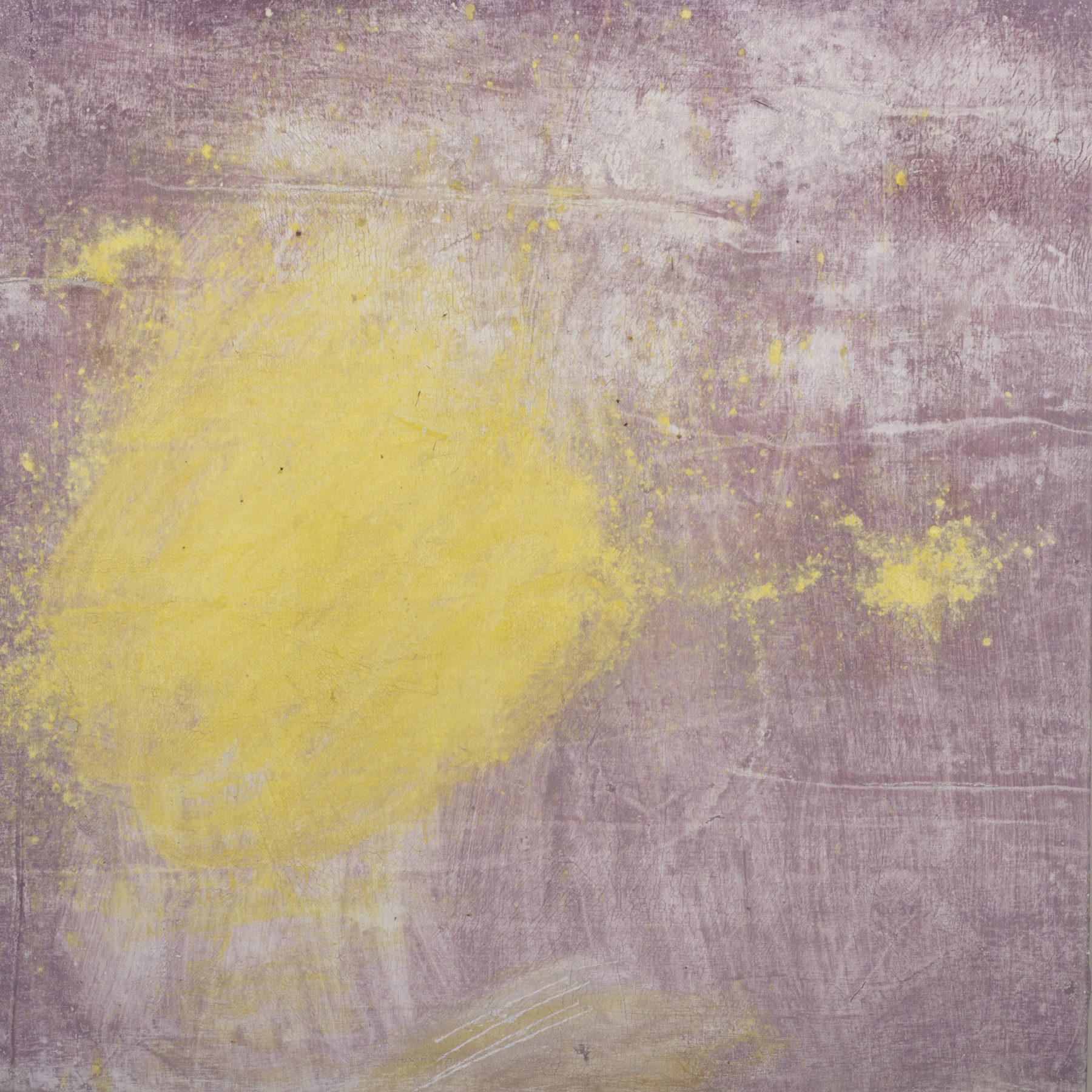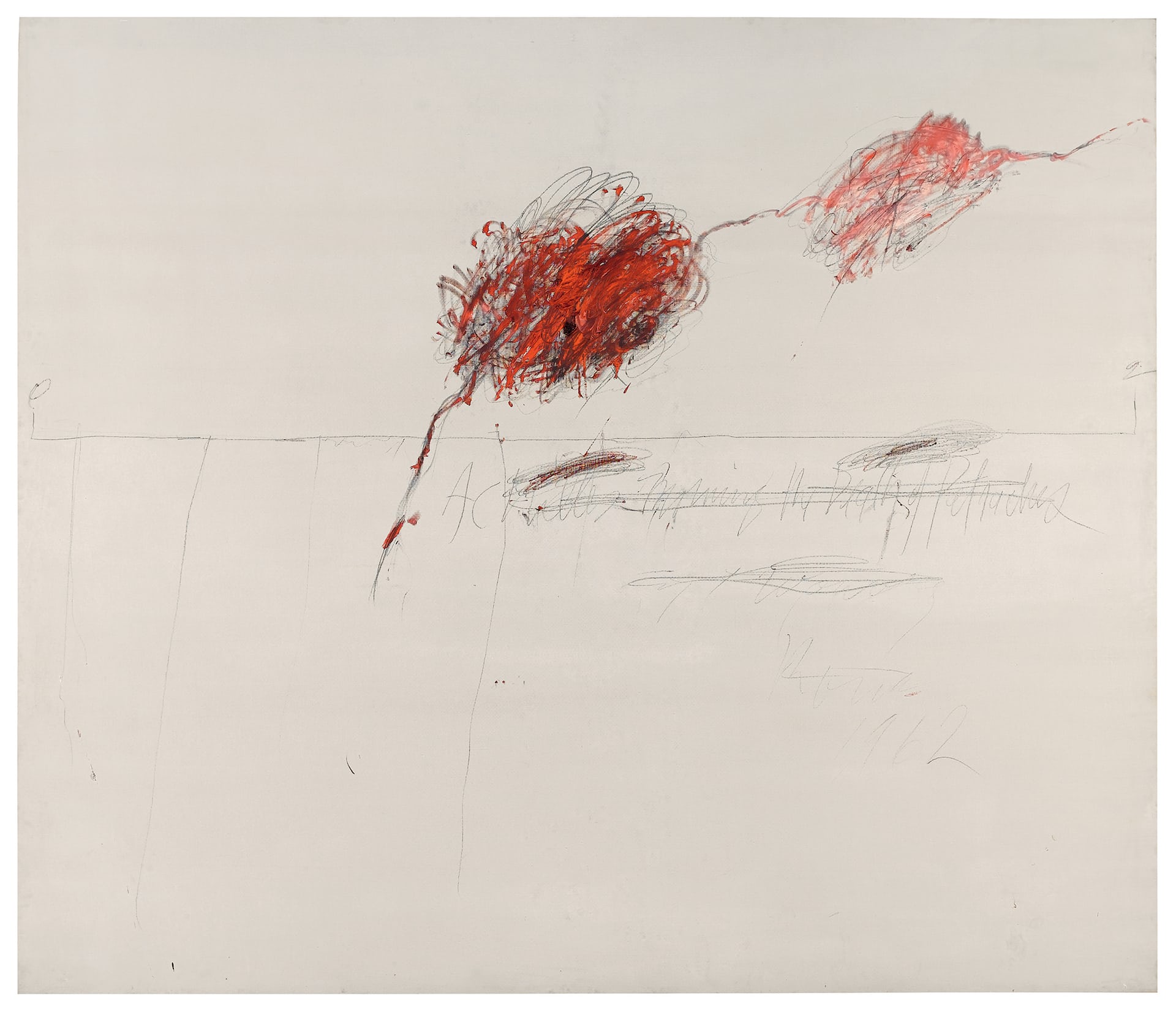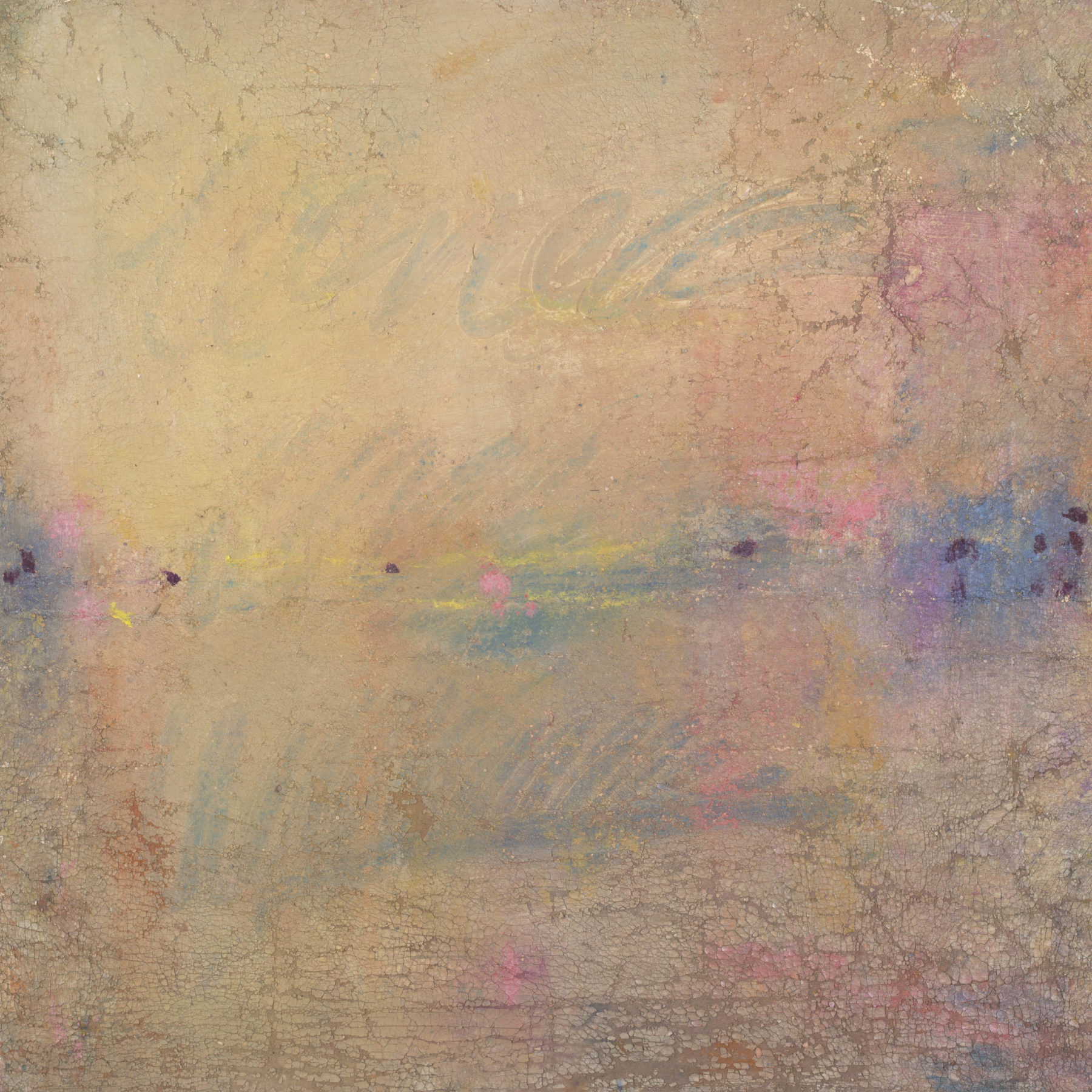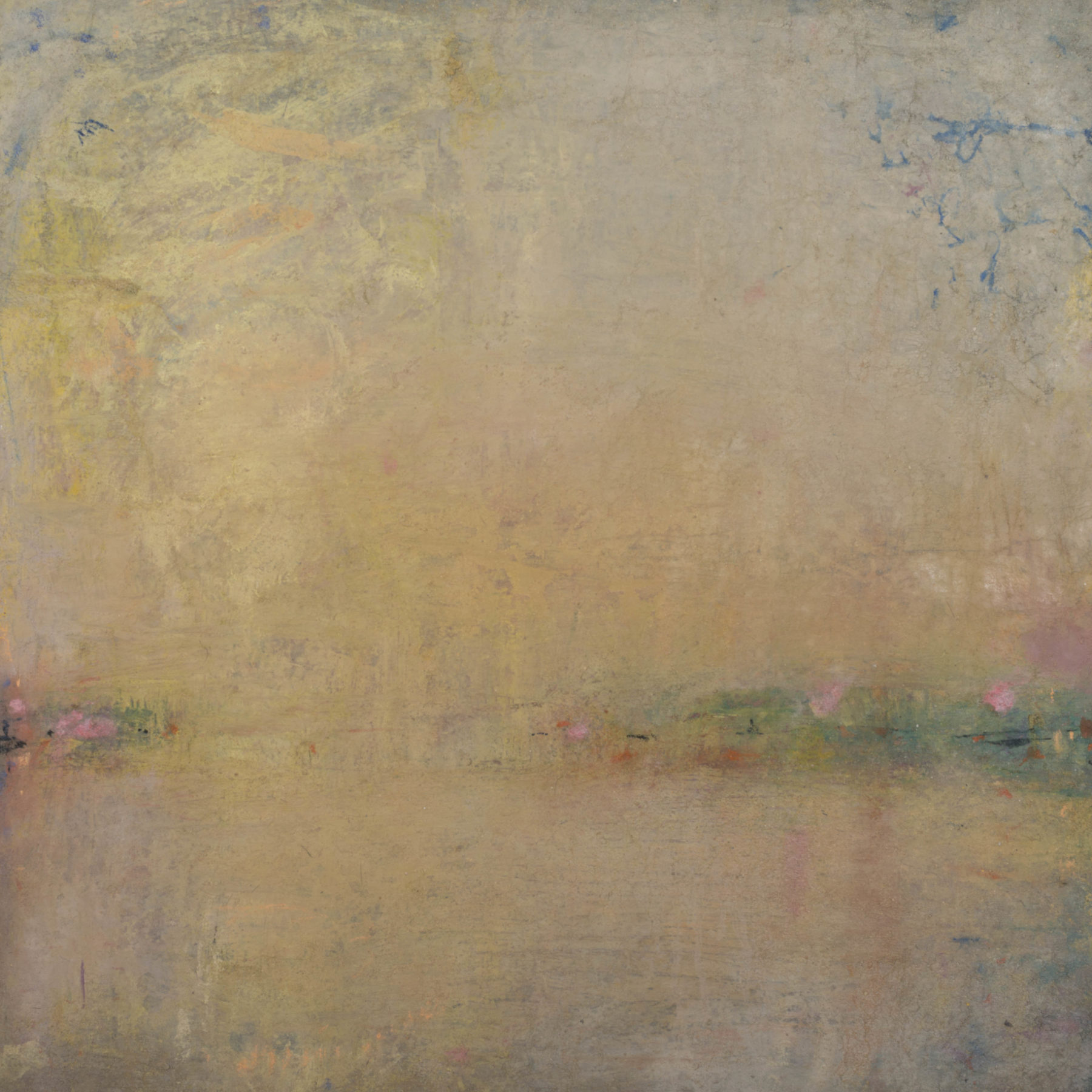Soulscapes and Success: The Extraordinary Art of Taha Afshar
Taha Afshar’s previous series, Garden of Mystery (2015) and Swedish Landscapes (2015) enjoyed considerable success. In Letting Light In (2016) Afshar returns to the original inspiration for the figurative works of the Garden of Mystery, Mahmud Shabistari’s Gulshan-I Raz (c., 1311) but via the abstraction of Swedish Landscapes. Afshar’s ‘take’ on Shabistari’s poetry interacts and comments upon a Sufi-Western canon stretching from Homer, Plato, and Plotinus contra Ibn Rushd and with Al-‘Arabi and Shabistari all the way to Sigmund Freud, André Breton, and Jacques Lacan. It’s heady, enlightening stuff. Afshar’s Letting Light In doesn’t shy away from the deepest questions that characterise our otherwise inane ‘being’ here, the otherwise absurdity of our life in this cosmos. He’s unafraid to explore that once, there was a command: ‘Let there be Light!’ We’d do well to follow Afshar in Letting Light In.
Taha Afshar's The Centre of Heaven's Throne is Your Heart (2016)
It’s useful to contrast Afshar’s True Thought Requires Abstraction (from Self) Then Shines the Radiant Light of Grace (2016) and Forever Illuminate the Eyes of all Hearts (2016) with Cy Twombly’s Achilles Mourning the Death of Patroclus (1962). They’re quite similar in the positioning of the oils and the inclusion of script. They’re very different, however, in their respective ambiances. Twombly paints Patroclus’ ‘not-being’ (his death or not-being-alive) in the medium of Achilles’ grief. Patroclus’ mangled body is but a blotch of violent red. Its form is unmistakeably frustrated—the artist’s angry scrawl brooks no patience—just as the hot-blooded Achilles’ felt none for want of vengeance. Achilles avenged Patroclus by killing Hector. The slain Trojan’s parents, Priam and Hecuba, could only watch as their son’s body was dragged around Ilion’s yet impregnable walls. Unlike Twombly, Afshar doesn’t paint this ‘not-being’ and its impatience for violence. He paints the very process of ‘being’ and the patience of ‘becoming’ through contemplation. Afshar eschews Twombly’s bloody red for an entelechous yellow that emanates across the canvas and series. He doesn’t run through the script across the canvas; instead, it appears in a dreamy and ambiguous cursive. In brief, this is the painting of light, not darkness.
‘Let there be light.’ How wordy is the English compared to the clipped Arabic of Islam! Allah says a single word: ‘Kun!’[1] He simply says, ‘Be!’ The world is just a response to this one command. It’s just a process of ‘becoming’ toward this original Being. Judaism, Christianity, and Islam agree that Yahweh, God, and Allah created the world for His Honour, Glory, and Recognition. In the Beginning, then, was God and the desire of the Other. It’s not simply One but the Other within this One. It’s the Divine and the Worldly within the Divine.
We can return to this One’s originary command: ‘Be!’ In English, it’s the ‘B’ and ‘E’ whereas in Arabic and Farsi, it’s the Kaf and the Nun. Shabistari writes that God, the One, ‘From the Kaf and the Nun brought forth two worlds!’[2] For, ‘One becomes many and many few.’[3] The Gulshan-I Raz isn’t so much about the ‘meaning of life’ than the question: How to return to this One? Letting Light In is the result of Afshar’s own attempts at returning to this One, this Unity.
What is this One? The Sufism of Shabistari’s Gulshan-I Raz was influenced by Plato and the ‘Neoplatonic’ Plotinus. The Bible’s Genesis even appears in Plato’s Timaeus (c., 360 BC) as ‘God kindled a light…that we now call the Sun.’[4] For Plotinus, the Sun reflects Light (the Light of God, the Good, and the One) just as the Moon reflects the Sun. Plotinus’ Enneads (c., 270) and Shabistari’s Gulshan-I Raz similarly write that enlightenment consists in finding this originary Light. How? Plotinus’ reply is simply: ‘Cut away everything.’[5] Or, following Afshar: True Thought Requires Abstraction (from Self) Then Shines the Radiant Light of Grace.
Afshar's Unity's Sanctuary (2016) heeds Plotinus' advice to '[c]ut away everything.'
‘Cut away everything.’[6] We’re always trapped in das gerede of checking our phones and our emails. Afshar followed Plotinus’ advice for several weeks and simply read Shabistari’s poetry. Finally, the paints came out. It’s as if Afshar was following Plotinus to the letter: ‘Never did eye see the sun unless it had first become sunlike, and never can Soul have vision of First Beauty unless itself be beautiful.’[7] It’s taken a long while, however, for Afshar to reach this moment…
He was born in Winchester in 1983 to Dr Karim Afshar and Ladan Bagheri. The city’s unique sensibility undoubtedly informed the young artist’s person and works. The ancient capital of England is the final resting place of Austen. It’s where Keats composed ‘To Autumn’ in 1819.
‘Hedge-crickets sing; and now with treble soft
The red-breast whistles from a garden croft;
And gathering swallows twitter in the skies.’[8]
Afshar attended Winchester College alongside Nicholas Hatfull and Oliver Osborne, both of whom would study at the Royal Academy. Until then, the trio studied under Ruskin School alumnus, Laurence Wolff, who encouraged Afshar to apply to the Drew Art Travel Prize in 2001. Afshar duly won the award and spent the summer travelling Tuscany with the photographer, Merrick D’Arcy-Irvine. In Tuscany, Afshar began painting impressionistic landscapes and overlaying them with automatic handwriting. He’d learnt about André Breton in French and Art at College. Breton, the founder of Surrealism, was influenced by Sigmund Freud’s The Interpretation of Dreams (1899). His Manifeste du surréalisme (1924) acknowledged the unconscious and its desire:
‘SURRÉALISME, n. m. Automatisme psychique pur par lequel on se propose d’exprimer, soit verbalement, soit par écrit, soit de toute autre manière, le fonctionnement réel de la pensée.’[9]
[Surrealism, n. m. Pure psychic automatism by which one proposes to express, either verbally, by means of the written word, or in any other manner, the actual functioning of thought.]
Breton thought the world had neglected ‘à la toute-puissance du rêve, au jeu désintéressé de la pensée.’[10] [[T]he omnipotence of the dream, the disinterested [freely associative] play of thought.] For Afshar, such dreams were far away: ‘there was a great deal of pressure to study something more worldly and practical than fine art.’ Unlike Hatfull and Osborne at the RA and those friends who’d travelled on ‘up’ to New College to study Classics and other Humanities, Afshar opted for Economics at University College London. He then made the journey across Russell Square and Kingsway for his MSc and PhD from the London School of Economics. It’s precisely this sort of worldliness that is challenged by Shabistari in the Gulshan-I Raz:
‘You have heard thus much of the universe,
Come, say what have you seen of the universe.’[11]
Afshar’s art responds to Shabistari by eschewing the phenomenal world for something altogether deeper. His previous series, Garden of Mystery, responded to Shabistari’s Gulshan-I Raz through the figurative. Letting Light In returns to Shabistari via the abstraction of the later Swedish Landscapes. Afshar thus attempts to represent something of “The Truth” (of God, the Good, the One) through abstraction rather than the mimicry of the world through figurative painting.
Afshar’s turn toward abstraction intersects with Plato’s views on ‘divine inspiration’ via Shabistari. Plato’s Ion (c., 390s BC) pits Socrates against the eponymous performer whose repertoire consists only of Homer. Plato’s Socrates argues against Ion’s mimesis, against the re-telling and re-representations of the world, which are supposedly removed from their original ideal form. Plato avers that every new form is increasingly imperfect and ersatz given such diversity does not return to the One as per, say, Shabistari’s statement: ‘One becomes many and many few.’[12] Plato certainly wouldn’t have understood Twombly’s representations of Achilles and Patroclus. But then again, neither does Roger Scruton: ‘Post-modern abstraction is really construction, in which abstract elements are combined ab initio, and without reference to the natural forms and perceptions which might first have endowed them with a meaning.’[13] And in the footnotes, ‘[f]or doodles try Cy Twombly’[14]. It’s as if the armchair critics of twentieth-century art unwittingly espouse a corruption of Plato when they say that art is increasingly imperfect, fragmented, and without form. Finally, it suits their inclination to conservatism.
Afshar’s abstraction yet moves with Plato and Shabistari in driving vulgar mimesis from the canvas. And yet, there’s still the representation of the sun—perhaps, as mimesis—but also as symbol, analogy, and metaphor as in the ‘Neoplatonic’ Plotinus. Afshar still suggests, then, that ‘divine inspiration’ is possible just as Plato’s position on ‘divine inspiration’ in the Ion remains utterly—perhaps encouragingly—ambiguous.
Afshar certainly isn’t alone in trying to capture ‘the delicate tension between the objective and the subjective,’[15] but insipid as this statement normally appears in artists’ statements, it’s justified in terms of Letting Light In. Kant gives the West the canonical tension between the objective and subjective. He centres the ‘subject’ (the autonomous person, who interestingly emerges alongside autonomous art) to whom objects appear via the unity of apperception, which inevitably strengthens the supposed unity of the subject. His Critique of Pure Reason (pub., 1781 and again in 1787) proposes that the price of this unity is that we’re subject to transcendental finitude—albeit, via the infinite form of (space and) time. It’s striking that Sufism and Psychoanalysis argue against Kant. Sufism attempts to obliterate the subject (one’s self-conscious self) in returning to the One. Psychoanalysis similarly de-centres the subject through positing that ambiguous thing that isn’t quite the opposite of consciousness, the unconscious. Sufism thus appears in Afshar’s switch from the figurative to the abstract and the disavowal of mimesis and the phenomenal world, i.e., the disavowal of Kant. Psychoanalysis similarly appears in Afshar’s automatic writing, which is borrowed from Breton and Freud.
Shabistari’s Gulshan-I Raz seemingly falls on that ‘other’ side of the phenomenal, the noumenal deemed ‘impossible’ by Kant. It’s God. It’s Light. It’s the One. Similarly, this noumenal realm isn’t the opposite of the phenomenal just as the unconscious isn’t the opposite of consciousness. ‘That which is separate from “The Truth” is phenomenal,’[16] says Shabistari, for ‘[t]he glory of “The Truth” admits no duality,’[17] but is Unity. Leonard Lewisohn states that Shabestari’s Gulshan-I Raz ‘embraces without reservation the teachings of Ibn al-‘Arabi’[18], who’s revered among Sufis as Shaykh Al-Akbar, the Greatest Master. We can approach Shabistari and Kant via Freud’s great disciple, Jacques Lacan, who’s also, incidentally, sometimes referred to as le maître absolu. His ‘Discourse to Catholics’ (c., 1960 and pub., 1986) concludes by relating the famous meeting between Ibn al-‘Arabi and Ahmad Ibn Rushd (Averroes) wherein Ibn Rushd greeted Ibn al-‘Arabi and, after a period of silence, simply asked, ‘Yes?’ ‘Yes,’ replied al-‘Arabi before saying, ‘No.’ Ibn Rushd then put the question explicitly: ‘What solution have you found as a result of mystical and divine inspiration? Doe it agree with what is arrived at by speculative thought?’ al-‘Arabi answered, ‘Yes and No.’[19]
It’s easy to imagine that Kant as frustrated with al-‘Arabi as was Ibn Rushd. Indeed, Herder characterised Kant’s philosophy as a form of Averroism. Lacan’s point in relating this story was that ‘truth’ wasn’t binary: it wasn’t ‘Yes’ or ‘No’. Afshar’s paintings similarly reward contemplation and reflection and not the precise ‘Yay’ or ‘Nay’ of the casual passer-by. Moreover, their 'Truth' isn't reducible to 'Yes' or 'No' but rather the 'Yes and No' of al-‘Arabi.
‘Philosophers, who have written on natural science,’ says Shabistari, ‘[d]efine bodies by length, breadth and depth.’[20] But, ‘[w]hat then is matter but an absolute nonentity. Wherein the demonstrated form?’[21] It’s tempting to think that Shabistari prefigures Kant in emphasising ‘form’ just as the pure form of (space and) time intuits the phenomenal. It’s actually the influence of Plato on al-‘Arabi. It’s only through the disavowal of any vulgar mimicry of the phenomenal world (its objects’ length, breadth, and depth) that one can appreciate the Unity of Being.
Taha Afshar Theopathanic Forms: Light upon Light (2016)
And yet, there’s another ‘form’ that gives this desire toward Unity of Being its recognisable consistency. The Lacanian philosopher, Slavoj Žižek, comments that Kant’s Critique of Practical Reason (1788) suggests that freedom ‘persists only in a space in between the phenomenal and the noumenal’[22] but shies from the radical insight that the ‘subject is a pure formal-structural function beyond the opposition of the noumenal and the phenomenal.’[23] So, what is this formal-structural function that is the subject? We can return to Shabistari for the answer,
‘Every man who as a void is empty of self,
Re-echoes within him the cry, ‘I am The Truth’’[24]
Lacan not only joins with Shabistari in siding with al-‘Arabi against Ibn Rushd, but also engages in an outrageous prosopoeia in ‘The Freudian Thing’ by stating: ‘I, Truth, speak.’[25] This ‘truth’ is that which is interjected into our speech and dreams from the depths of the unconscious. It’s something discernible—but only just, as, say, Afshar’s cursive script—in the signifying chain in which the subject appears. ‘Indeed,’ says Lacan, ‘there are in the unconscious signifying things that repeat and that constantly run unbeknown to the subject.’[26]
For Lacan, this ‘lack’ originates in our speech, writing, our language. We’re cursed to never truly express ourselves in this medium, which yet intimates the promise of a once-upon-a-time before language. He states that the subject is characterised by manque (lack) which is desire. We're creatures of lack precisely because we lack the words to truly express ourselves. Why is desire the same as lack? You cannot desire what you already have. You can only desire what you do not have. It’s the very lack-of-being that forms the grounds for desire. It’s this very lack-of-being that accompanies our acquisition of language. Otto Rank, the wayward son of psychoanalysis, argued that this origin occurred not in the acquisition of language, but in the traumatic separation of birth. For Shabistari and the Sufis, it occurred in that original command: ‘Kun!’ The first word, which split everything into two and then too many.
Katherine Pratt Ewing’s Arguing Sainthood: Modernity, Psychoanalysis, and Islam (1997) explores Sufism and Lacan through Shabistari’s other influence, al-Ghazzali or Algazel, whose The Incoherence of the Philosophers (c., 1080s-90s) prompted a lengthy and irate reply by Ibn Rushd. Ewing states that ‘[f]or al-Ghazzali, as for Lacan, the speaking subject is founded on a void, a moment of separation, a lack.’[27] She understands al-Ghazālī’s Sufi approach toward God as the coming toward ‘the fathomless depth of His qualities, the abyss of His essence’[28] as ‘a limitless approach, a goal never to be reached.’[29] In this way, it’s pure Lacan. ‘The self is obliterated in an intense, paradoxical desire, an essence that is also an abyss.’[30]
Lacan’s great psychoanalytic concept is the objet petit a. It’s the cause of our desire, a sliver of the presumed jouissance that characterised the world before language. It’s something that cannot be described, but only discerned through what it is not. Much like Plotinus describes Unity as not something to be described, but only discerned through difference to the forms that emanate from it. It, like the sun, is too painful to look at directly. It’s neat that this intersects exactly with Shabistari:
‘You may look on the brilliant sun in the water.
Since its brightness shows less brightly therein,
You can bear to look on it for a longer space.
Not being is the mirror of absolute Being,
Therein is reflected the shining of “The Truth.”’[31]
It’s possible, then, to imagine Afshar standing on the lakeside gazing into the Sun and repeating that psychoanalytic mantra: ‘Wo Es war, soll Ich werden’ for where It was, so I shall come to Be… It's as if Afshar recognises these fundamental and originary splits: that of language, which is the castration of Being through representation; that of painting, which in mimicry removes us from the first form; that of the word 'Kun!' from which flows the manifold. In 'Wo Es war, soll Ich werden,' the artist acknowledges the origin of art, sublimation, some sort of prime mover however each individual characterises it.
It’s this sort of courageous painterly depth—to take responsibility for one’s desire and existence, and to then paint—that’s seen Afshar collected by Monir Farmanfarmaian and Rose Issa. Monir’s first major retrospective, Possibility: Mirror Works and Drawings, debuted in 2015 at the Serralves Museum, Porto, before travelling on to the Guggenheim, New York. Issa is a well-known curator who’s worked with the V&A and Tate in London and the Hermitage Museum in St Petersburg. Afshar’s next solo show is at the Minster Gallery, Winchester, from 28 September – 30 October, 2018.
[1] ‘Sūrah Yā Seen’ in The Qur’an, (Jeddah: Abul-Qasim Publishing House for Al-Muntada Al-Islami Trust, 2012), Sūrah, 36, Ch., 82, p., 437.
[2] Sa’d Ud Din Mahmud Shabistari, Gulshan-I Raz: The Mystic Rose Garden, trans., by E. H. Whinfield, (London: Trübner & Co., 1880), p.1.
[3] Ibid., p.2.
[4] Plato, Timaeus, trans., by Donald J. Zeyl, (Indianapolis: Hackett Publishing Company, 2000), p., 25.
[5] Plotinus, The Enneads, trans., by Stephan MacKenna, (London: Faber & Faber, 1956), V., 3., p.400.
[6] Ibid.
[7] Ibid., I., 6., p.64.
[8] John Keats, ‘To Autumn’, <https://www.poetryfoundation.org/poems/44484/to-autumn> [accessed 19 February, 2018]
[9] André Breton, Manifestes du surréalisme, (Paris: Gallimard, 1971), p.37.
[10] Ibid., p.38.
[11] Shabistari, Gulshan-I Raz, (London: Trübner & Co., 1880), p.17.
[12] Ibid., p.2.
[13] Roger Scruton, Modern Culture, (London: Continuum, 2007)), p.88.
[14] Ibid.
[15] Taha Afshar, ‘Statement’, < http://www.tahaafshar.com/biography-statement/> [accessed 19 February, 2018]
[16] Shabistari, Gulshan-I Raz, (London: Trübner & Co., 1880), p.46.
[17] Ibid.
[18] Leonard Lewisohn, ‘Shabistari, Mahmud’, in The Biographical Encylcopedia of Islamic Philosophy, ed., by Oliver Leaman, (London: Bloomsbury, 2015), p.447.
[19] Excerpts from Ibn Al-‘Arabi’s Futūbāt in R. W. J. Austin, ‘Introduction’ in Ibn Al’Arabi, The Bezels of Wisdom, trans., by R. W. J. Austin, p.2.
[20] Shabistari, Gulshan-I Raz, (London: Trübner & Co., 1880), p.49.
[21] Ibid.
[22] Slavoj Žižek, ‘The Parallax View’ in Interrogating the Real, (London: Bloomsbury, 2006), p.205.
[23] Ibid.
[24] Shabistari, Gulshan-I Raz, (London: Trübner & Co., 1880), p.46.
[25] Jacques Lacan, ‘The Freudian Thing’ in Écrits, trans. by Bruce Fink, (London: W.W. Norton & Company, 2006), p.340.
[26] Jacques Lacan, ‘Discourse to Catholics’ in The Triumph of Religion, trans., by Bruce Fink, (Cambridge: Polity, 2013), p.12.
[27] Katherine Pratt Ewing, Arguing Sainthood: Modernity, Psychoanalysis, and Islam, (), p.258.
[28] Ibid., p.257.
[29] Ibid., p.258.
[30] Ibid.
[31] Shabistari, Gulshan-I Raz, (London: Trübner & Co., 1880), p.14.




![Afshar's Unity's Sanctuary (2016) heeds Plotinus' advice to '[c]ut away everything.'](https://images.squarespace-cdn.com/content/v1/57bb5f80e6f2e1516c7172f7/1519064967445-BPUKZUOUSKEFP7HC1VUR/afshar+unity.jpg)

